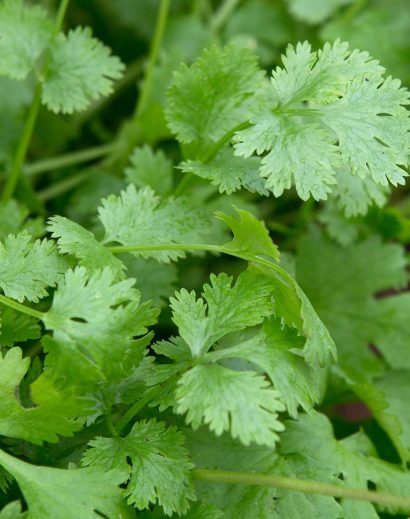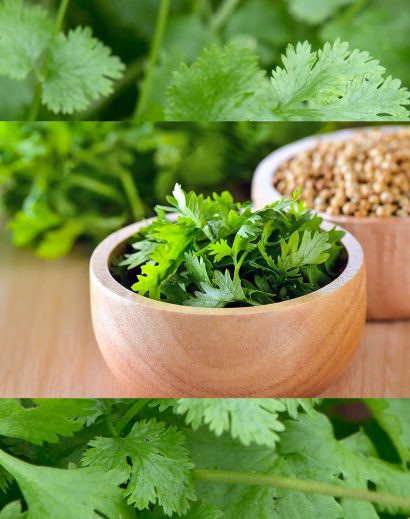Coriander, also known as cilantro in some regions, is a versatile herb that is commonly used in cooking around the world. It is well-known for its distinctive aroma and flavor, which can be described as citrusy, slightly sweet, and earthy with a hint of peppery spice. Here are some key characteristics and descriptions of coriander:
- Botanical Background: Coriander belongs to the Apiaceae family and is scientifically known as Coriandrum sativum. It is an annual herb that grows to a height of about 20-50 centimeters (8-20 inches).
- Leaves: The leaves of the coriander plant are flat, delicate, and lobed, resembling parsley leaves. They are bright green and often used as a herb in cooking. These leaves are commonly referred to as “cilantro leaves” in many countries.
- Seeds: Coriander seeds are round, tan-colored, and have a slightly ridged surface. They are often used as a spice and have a different flavor profile compared to the leaves. The seeds have a warm, citrusy, and slightly nutty flavor.
- Flavor: The flavor of coriander leaves is fresh, citrusy, and mildly herbaceous. Some people find it refreshing, while others may detect a slightly soapy or pungent taste due to a genetic predisposition. Coriander seeds, on the other hand, have a warm, spicy, and nutty flavor with hints of citrus.
- Aroma: Coriander leaves have a distinct and pleasant aroma that is often described as bright and citrusy, with subtle herbal notes. The seeds have a more intense, warm, and earthy aroma.
- Culinary Uses: Coriander is a popular herb in many cuisines, including Indian, Mexican, Thai, and Middle Eastern. It is used to add flavor and freshness to a wide range of dishes, such as curries, salsas, soups, salads, and marinades. The seeds are used as a spice in spice blends, pickling, and as a key ingredient in some curry powders.
- Health Benefits: Coriander is believed to have various health benefits. It is a good source of vitamins and minerals, including vitamin C, vitamin K, and potassium. Some studies suggest that it may have antioxidant and anti-inflammatory properties and could help with digestive issues.
- Cultural Significance: Coriander has been used in traditional medicine and cooking for centuries in various cultures. It is an essential ingredient in many traditional dishes and plays a significant role in the culinary heritage of many countries.
In summary, coriander is a versatile herb with a unique flavor and aroma. It is used in a wide variety of culinary dishes and has a rich cultural and historical significance in the world of cooking and traditional medicine.






Reviews
There are no reviews yet.